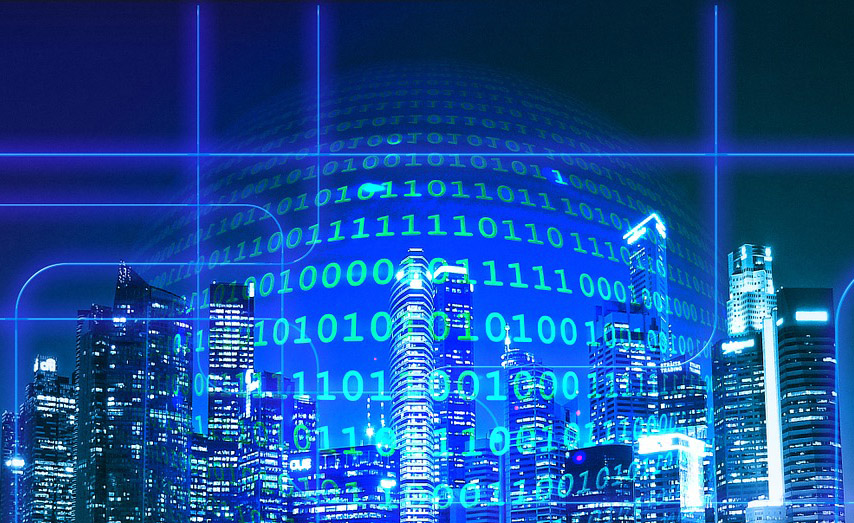The buildings in which we work in are improving, getting smarter and more connected. The futurist autonomous technologies we observe as the backdrop to science fiction films are closer to the present than you think. We now have badges to access specific areas of a building and a blend of technologies to automate building management for temperature and lighting.
Office environments are actively adopting smart technologies to demonstrate how digitalization is transforming conventional workplaces into the smart workplaces of the future that benefit both the owner and the tenant. For businesses searching for office space, it is imperative to know that location can have substantial benefits, including: lower costs and a greater comfort for employees.
 The internet of things (IOT)
The Agnelli Foundation in Italy has transformed its Turin headquarters into an advanced Internet of Things (IOT) office building to create optimal working conditions in the building through geo-localisation of people moving inside the complex. Hundreds of sensors monitor all kinds of building data, including the location of the occupants but without identifying them. Sensors regularly check temperatures, C02 concentration and availability of meeting rooms. A three-axis indoor positioning system based on smartphones and custom tags was installed. It detects and communicates the presence of occupants and positioning data, automatically triggering the appropriate response of the building’s facilities. A building management system designed by Siemens monitors climate, lighting, CCTV and alarms and can also be used to book meeting rooms. The system is available in app format to occupants in the building who can interact with co-workers and personalize their preferred environmental settings.
The internet of things (IOT)
The Agnelli Foundation in Italy has transformed its Turin headquarters into an advanced Internet of Things (IOT) office building to create optimal working conditions in the building through geo-localisation of people moving inside the complex. Hundreds of sensors monitor all kinds of building data, including the location of the occupants but without identifying them. Sensors regularly check temperatures, C02 concentration and availability of meeting rooms. A three-axis indoor positioning system based on smartphones and custom tags was installed. It detects and communicates the presence of occupants and positioning data, automatically triggering the appropriate response of the building’s facilities. A building management system designed by Siemens monitors climate, lighting, CCTV and alarms and can also be used to book meeting rooms. The system is available in app format to occupants in the building who can interact with co-workers and personalize their preferred environmental settings.
 Future offices - responsive to occupants
Unfortunately this evolution does not come without its jeopardies. It has been estimated that by the close of this year, 20% of smart buildings will have suffered some form of digital vandalism. The threat surface is great and the consequences of a security breach can be significant. In 2016, a hotel in Austria suffered a cyber-attack. Guests were locked out of their rooms until a ransom was paid. In Finland, a DDoS attack (distributed denial of service - an attempt to make an online service unavailable by overwhelming it with traffic from multiple sources) targeting the heating system left residents of two apartment blocks in freezing conditions. The consequences of these attacks could become increasingly dangerous and costly if smart building targets were hospitals, banks or government buildings. Improved cyber security is required for these early adopted technologies.
By 2030 the operational management of workplaces will largely be undertaken by algorithms. Buildings will be able to link location data with information from corporate databases and social media to engineer interactions between staff members. Offices will soon become part of the management – for example, notifying one employee working on a project that another specialist is nearby and suggesting a meeting. Commercial building tenants will expect their environments to become smarter, creating an additional incentive for building owners to upgrade or extend their building management systems.
Future offices - responsive to occupants
Unfortunately this evolution does not come without its jeopardies. It has been estimated that by the close of this year, 20% of smart buildings will have suffered some form of digital vandalism. The threat surface is great and the consequences of a security breach can be significant. In 2016, a hotel in Austria suffered a cyber-attack. Guests were locked out of their rooms until a ransom was paid. In Finland, a DDoS attack (distributed denial of service - an attempt to make an online service unavailable by overwhelming it with traffic from multiple sources) targeting the heating system left residents of two apartment blocks in freezing conditions. The consequences of these attacks could become increasingly dangerous and costly if smart building targets were hospitals, banks or government buildings. Improved cyber security is required for these early adopted technologies.
By 2030 the operational management of workplaces will largely be undertaken by algorithms. Buildings will be able to link location data with information from corporate databases and social media to engineer interactions between staff members. Offices will soon become part of the management – for example, notifying one employee working on a project that another specialist is nearby and suggesting a meeting. Commercial building tenants will expect their environments to become smarter, creating an additional incentive for building owners to upgrade or extend their building management systems.
 The internet of things (IOT)
The Agnelli Foundation in Italy has transformed its Turin headquarters into an advanced Internet of Things (IOT) office building to create optimal working conditions in the building through geo-localisation of people moving inside the complex. Hundreds of sensors monitor all kinds of building data, including the location of the occupants but without identifying them. Sensors regularly check temperatures, C02 concentration and availability of meeting rooms. A three-axis indoor positioning system based on smartphones and custom tags was installed. It detects and communicates the presence of occupants and positioning data, automatically triggering the appropriate response of the building’s facilities. A building management system designed by Siemens monitors climate, lighting, CCTV and alarms and can also be used to book meeting rooms. The system is available in app format to occupants in the building who can interact with co-workers and personalize their preferred environmental settings.
The internet of things (IOT)
The Agnelli Foundation in Italy has transformed its Turin headquarters into an advanced Internet of Things (IOT) office building to create optimal working conditions in the building through geo-localisation of people moving inside the complex. Hundreds of sensors monitor all kinds of building data, including the location of the occupants but without identifying them. Sensors regularly check temperatures, C02 concentration and availability of meeting rooms. A three-axis indoor positioning system based on smartphones and custom tags was installed. It detects and communicates the presence of occupants and positioning data, automatically triggering the appropriate response of the building’s facilities. A building management system designed by Siemens monitors climate, lighting, CCTV and alarms and can also be used to book meeting rooms. The system is available in app format to occupants in the building who can interact with co-workers and personalize their preferred environmental settings.
 Future offices - responsive to occupants
Unfortunately this evolution does not come without its jeopardies. It has been estimated that by the close of this year, 20% of smart buildings will have suffered some form of digital vandalism. The threat surface is great and the consequences of a security breach can be significant. In 2016, a hotel in Austria suffered a cyber-attack. Guests were locked out of their rooms until a ransom was paid. In Finland, a DDoS attack (distributed denial of service - an attempt to make an online service unavailable by overwhelming it with traffic from multiple sources) targeting the heating system left residents of two apartment blocks in freezing conditions. The consequences of these attacks could become increasingly dangerous and costly if smart building targets were hospitals, banks or government buildings. Improved cyber security is required for these early adopted technologies.
By 2030 the operational management of workplaces will largely be undertaken by algorithms. Buildings will be able to link location data with information from corporate databases and social media to engineer interactions between staff members. Offices will soon become part of the management – for example, notifying one employee working on a project that another specialist is nearby and suggesting a meeting. Commercial building tenants will expect their environments to become smarter, creating an additional incentive for building owners to upgrade or extend their building management systems.
Future offices - responsive to occupants
Unfortunately this evolution does not come without its jeopardies. It has been estimated that by the close of this year, 20% of smart buildings will have suffered some form of digital vandalism. The threat surface is great and the consequences of a security breach can be significant. In 2016, a hotel in Austria suffered a cyber-attack. Guests were locked out of their rooms until a ransom was paid. In Finland, a DDoS attack (distributed denial of service - an attempt to make an online service unavailable by overwhelming it with traffic from multiple sources) targeting the heating system left residents of two apartment blocks in freezing conditions. The consequences of these attacks could become increasingly dangerous and costly if smart building targets were hospitals, banks or government buildings. Improved cyber security is required for these early adopted technologies.
By 2030 the operational management of workplaces will largely be undertaken by algorithms. Buildings will be able to link location data with information from corporate databases and social media to engineer interactions between staff members. Offices will soon become part of the management – for example, notifying one employee working on a project that another specialist is nearby and suggesting a meeting. Commercial building tenants will expect their environments to become smarter, creating an additional incentive for building owners to upgrade or extend their building management systems. - Date
- Category
- The Built Environment